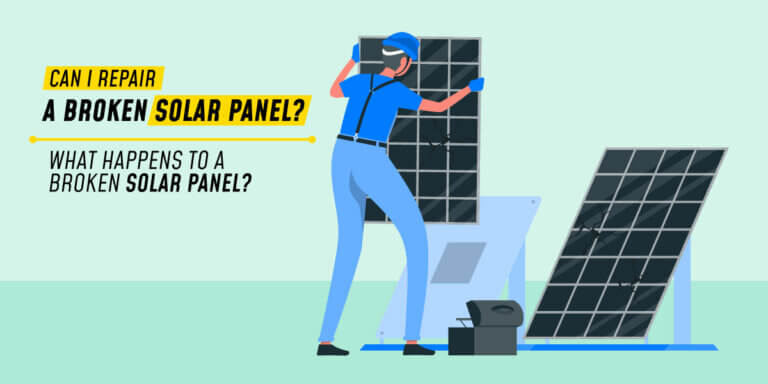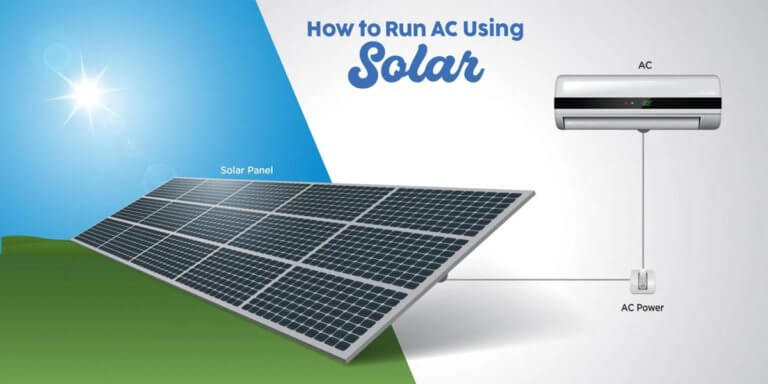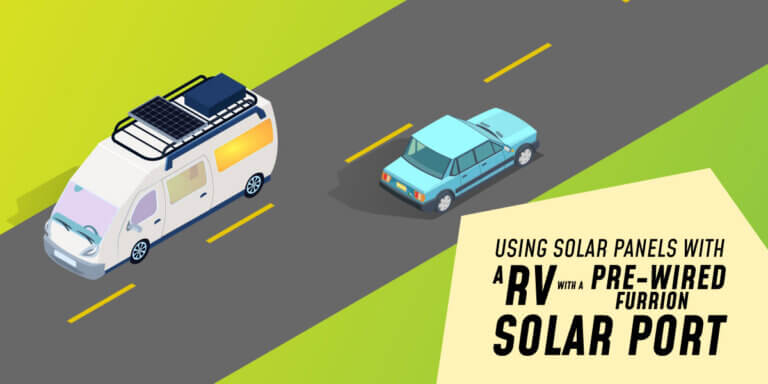Series Vs Parallel Solar Panels Connections Explained
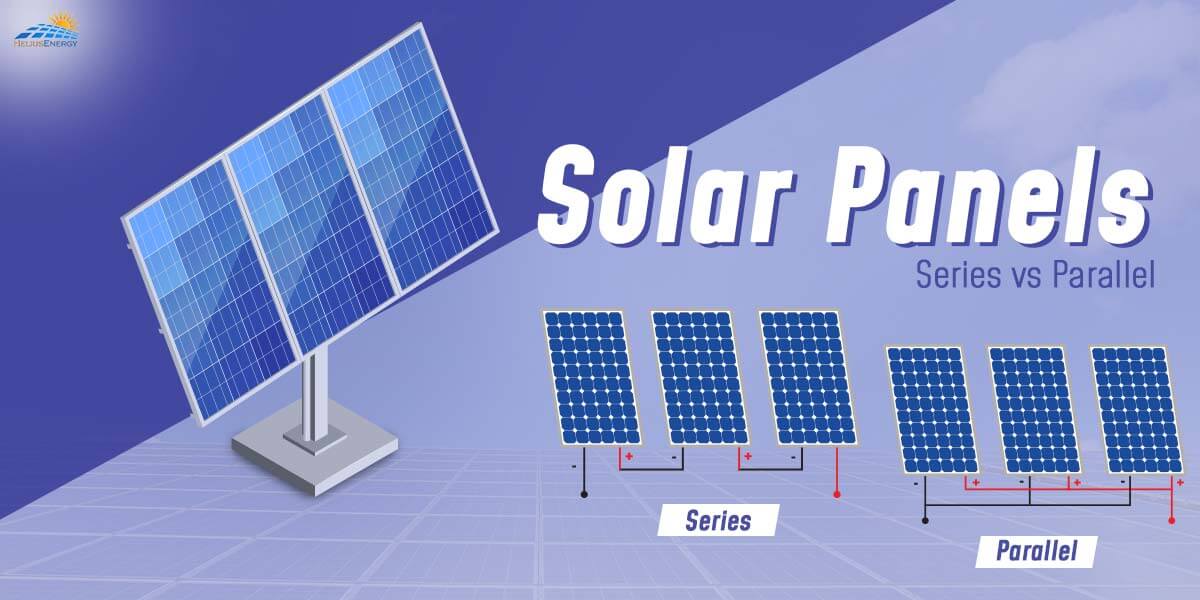
A fundamental topic for any solar installation is solar panel wiring (also known as stringing) and how to string solar panels together. Understanding how different stringing configurations affect a solar array’s voltage, current, and power is critical for selecting an optimal inverter and ensuring that the system functions properly.
This section will go over series and parallel connections in further detail. This section aims to explain why certain connections are used, how to set up your preferred connection, and how to determine which connection is the most useful for your case between series vs parallel solar panels.
Why is Different Wiring Required For Series or Parallel Solar Panels?
The output voltage and current are the key differences between wiring solar panels in series and parallel. When many panels are connected in series, the output voltages add up, and the output current stays the same. When multiple solar panels are connected in parallel, their output currents add up, but their output voltages remain constant.
If you want to connect your solar panels in parallel, you’ll need high-amperage cabling and components. When you choose serial wiring for your solar system, the voltage and amperage will be higher, putting less strain on your cables and components.
It has an impact on your system’s performance as well as the inverter you’ll be able to use. You want your panels to be wired so that they provide you with the most savings and a higher return on investment.
What Does It Mean When A Solar Panel is in Parallel Wiring?
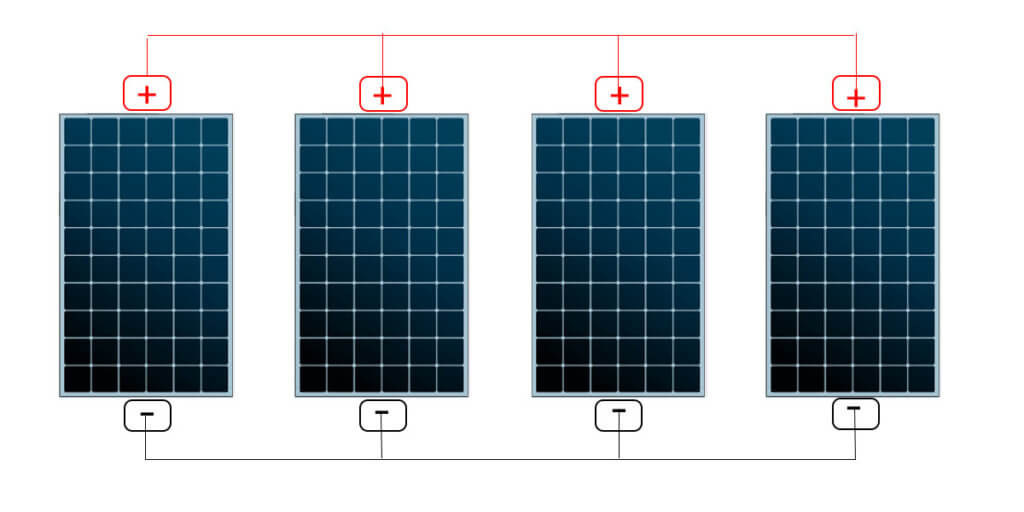
When solar panels are wired in parallel, the positive terminals of one panel are connected to the positive terminals of another panel, and the negative terminals of both panels are connected.
Positive wires are connected to a positive connector in a combiner box, whereas negative wires are connected to a negative connector. A PV output circuit is created when many panels are connected in parallel.
The amperage increases when solar panels are wired in parallel while the voltage remains constant. If you wired the same panels in parallel as in series wiring, the system’s voltage would stay at 40 volts, but the amperage would rise to 10 amps.
Parallel wiring allows you to have additional solar panels that produce energy without exceeding your inverter’s working voltage constraints. Inverters are also limited by amperage, which you can overcome by connecting your solar panels in parallel.
Advantages of Solar Panels Wired in Parallel
Although there are exceptions, strictly parallel connections are typically used in smaller, more basic systems and with PWM (pulse width modulation) controllers. By connecting your panels in parallel, you can boost the amps while maintaining the same voltage. This is commonly used in 12V systems with several panels since wiring 12V panels in parallel keeps the charging voltage at 12V.
Systems as high as 1000 watts may produce over 50 amps; this current can be difficult to transfer. If your solar panels are more than 10 feet away from each other, you will need to use 4 AWG or a thicker wire which can be costly in the long run. Paralleling systems also necessitate additional hardware, such as branch connectors or a combiner box.
What Does it Mean When a Solar Panel is in Series Wiring?

Solar panels, like batteries, have two terminals: one positive and one negative. A series connection is formed when the positive terminal of one panel is connected to the negative terminal of another panel. A PV source circuit is formed when two or more solar panels are connected in this manner.
When solar panels are connected in series, their voltages add up, but their amperage remains constant. If two solar panels with a rated voltage of 40 volts and a rated amperage of 5 amps are connected in series, the series voltage will be 80 volts while the amperage will remain at 5 amps.
The voltage of the array rises when panels are connected in series. This is critical because the inverter in a solar power system must function at a specific voltage. To meet your inverter’s working voltage window requirements, you connect your solar panels in series.
Advantages of Solar Panels Wired in Series
Smaller systems with an MPPT (maximum power point tracking) controller typically use series connections. By connecting your panels in series, you can raise the voltage while maintaining the same amperage.
The use of series connections with MPPT controllers is because MPPT controllers can accept a greater voltage input while still charging your 12V or more batteries.
Renogy MPPT Controllers may take input voltages of up to 100 volts. The series has the advantage of being simple to convey over vast distances. For example, you can connect four Renogy 100-watt panels in series, run the line 100 feet, and use only 14-gauge wire.
Which is Preferable, Series or Parallel Solar Panels?
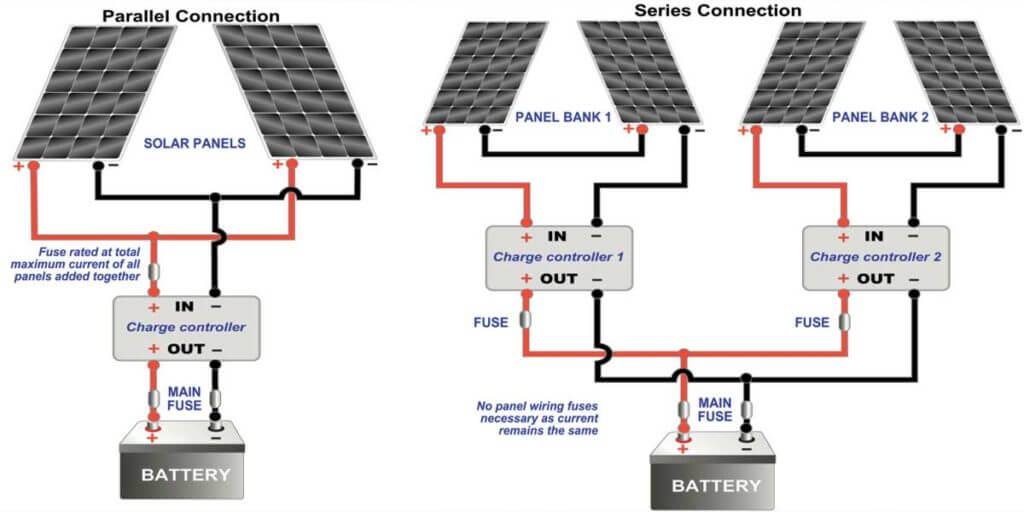
We can discuss which option is better now that we know the difference between wiring solar panels in series and parallel including the charge controller (MPPT or PWM) that are required for the connections. So, should your solar panels be connected in series or parallel?
If you can spend most of your time outdoors, connecting your solar panels in series is frequently the best option. The major reason for this is that your solar panel system will be more efficient and work better at the start and end of the day and during cloudy conditions because charging batteries requires a higher voltage than their nominal voltage.
Connecting your solar panels in parallel isn’t always a bad idea. MPPT charge controllers are expensive, and for tiny portable applications, they may be overkill. A parallel system may be a wonderful alternative if you have a modest low-voltage system for an RV or boat that will be in fluctuating lighting conditions.
This system will function well with a low-cost PWM charge controller, saving you money. Once you have decided in which manner you want to connect your solar panel, the next step is to connect the solar panels. If you are unsure of how to connect the two solar panels, read this guide.
Conclusion
You should now be able to distinguish between series vs parallel solar panels wiring systems. Each has its own set of advantages and disadvantages, so you’ll have to choose wisely. Solar panels can be wired in parallel to increase the number of solar panels without exceeding the voltage limit of the inverter.
Solar panels are connected in series to enhance voltage and meet the inverter’s minimal working requirements. When solar modules are interconnected in parallel, one module’s positive terminal is connected to the positive terminal of another, increasing the system’s amperage.
The wired solar panels impact how well the system operates and which inverter it can be connected to. The positive terminal of one solar module is connected to the negative terminal of another when solar panels are wired in series, increasing the voltage of the solar system.

